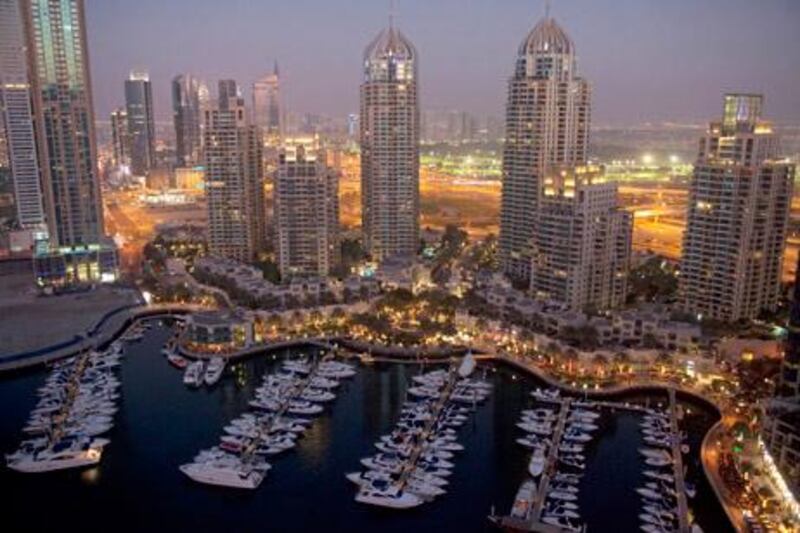Dubai property prices are stabilising in the emirate's "lifestyle locations" as a two-tier market emerges, with some homes losing about half of their value in the past two years.
Before the collapse of the market in late 2008, prices and rents moved in tandem because of the role played by speculators in buying and selling homes. Prices are more a reflection of overall demand for properties in Dubai. Now, after two years of depressed activity and restructuring, buyers are re-emerging in Dubai, looking for homes that will prove a good investment and offer a "lifestyle".
Dubai property prices declined by 2.4 per cent for apartments and 5.1 per cent for villas in the fourth quarter of last year compared with the previous three months, data from Cluttons show.
Locations with established infrastructure and retail, such as Old Town, Dubai Marina, Palm Jumeirah, The Meadows and The Greens, proved more resilient in both sale prices and rental rates, according to the estate agent.
Leah James, a manager of residential sales and leasing at the estate agency Better Homes, said she leased a home at Jumeirah Islands for Dh270,000 (US$73,509) a year four months ago. Now, prices for similar homes are between Dh320,000 and Dh350,000.
"While rents there have risen, it doesn't mean they will lease for what many of the owners are asking," she said.
Still, one area experiencing a rise in rental rates is an indication that the principles of supply and demand are applying to individual neighbourhoods as well as the city as a whole.
Transactions at developments along the periphery of the emirate, such as Dubai Silicon Oasis and International City, have dried up, with prices dropping even further.
Billy Rautenbach, the managing director of The Property Store agency, said even Jumeirah Village - a more centrally located development - had cooled off.
"There is no infrastructure," she said. "It's actually hard to get into and out of. You have to plan a mission just to get in there."
The stabilisation of prices in select neighbourhoods has raised confidence among mortgage lenders. Lloyds Banking Group, one of the first major institutions to cut back its lending when the global crisis hit the UAE in November 2008, plans to launch a new programme for apartment buyers.
Initially, it is focusing on lending for properties in the Shoreline Apartments on Palm Jumeirah and Downtown near the Burj Khalifa, according to a mortgage adviser at the bank.
Elaine Jones, the chief executive of Asteco, said prices for Palm Jumeirah villas had bottomed out at 2004 levels but were now on the rise again. "Palm villas are seeing an absolute growth now," she said.
The market has become aware of the differing quality of homes in Dubai, including standard of finish, amenities and location. Prices for the Jumeirah Beach Residence Apartments facing the sea have stabilised, while homes with inferior views are still dropping.
"Certain areas have bottomed out and are sitting comfortably," Ms Jones said. She described new buyers in the market as "the most cosmopolitan mix: Russian; Chinese; Belgian; Dutch; French; Greek; British; and Indian".
"[Dubai] is not as expensive as it used to be," she said. "That's leading to little flurries of people back into the market."






